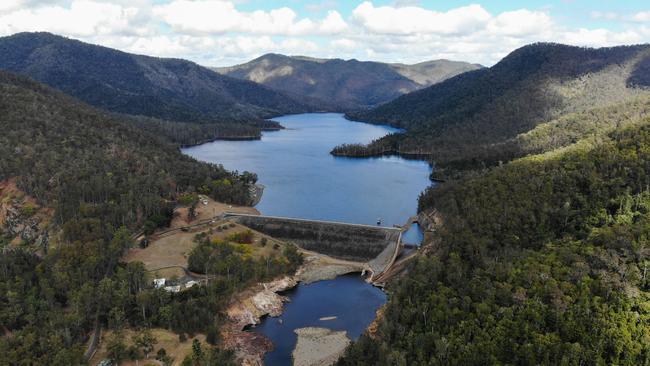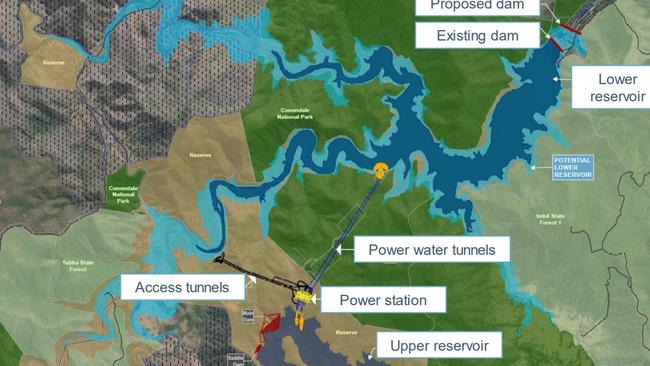Exploratory works underway for Borumba pumped hydro
The historic development will include a new upper reservoir and a new dam wall to replace the existing Borumba dam wall, which will increase the lake’s capacity from 46 to 224 gigalitres.
Gympie
Don't miss out on the headlines from Gympie. Followed categories will be added to My News.
One of Queensland’s biggest clean energy projects has hit a new milestone, with the Borumba Pumped Hydro Energy Storage project declared a coordinated project.
The declaration by Queensland’s Coordinator-General means a rigorous assessment of social, economic and environmental matters could begin.
The project, being developed by Queensland Hydro, involves building a new upper reservoir, as well as a new dam wall that will replace the existing Borumba Dam wall and increase Lake Borumba’s storage capacity from 46 to 224 gigalitres.
It would have the capacity to generate up to 2000 megawatts of electricity for up to 24 hours at a time.
Borumba pumped hydro project explainer

The community will have opportunities to comment on what should be included in the Environmental Impact Statement as well as Queensland Hydro’s assessment of the project and proposed mitigations to avoid and minimise impacts.
Geotechnical exploratory drilling has started on the project, in the Southern Queensland Renewable Energy Zone, which will help inform the EIS process.
Energy, Renewables and Hydrogen Minister Mick de Brenni said the project would be looking for Sunshine Coast companies and tradies to be part of the build.

“Borumba will allow us to replace expensive fossil fuels with Queensland’s sun, wind, and water–putting the Sunshine State on the map as a global renewable energy hub,” Mr de Brenni said.
“Pumped hydro is proven technology, ready to go now, and has been supercharged by a $19 billion investment in our Queensland Energy and Jobs Plan, creating around 2000 local jobs and securing our renewable energy future.
“Because Queenslanders kept their energy network in public hands, they have the power like nowhere else in the nation to benefit from the clean energy transition.”




